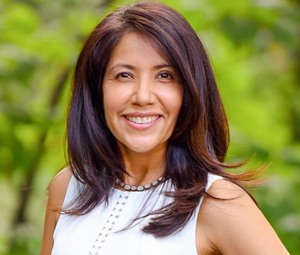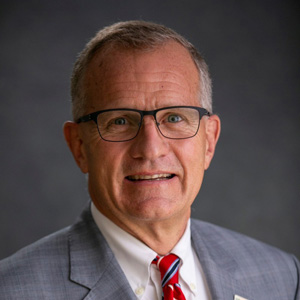Farm groups have grown accustomed over the last few years to having more money to work with for promoting their products overseas, but that abundance could come to an end quickly.
With the Trump administration’s $300 million Agricultural Trade Promotion program coming to an end next year and mounting concern that support on Capitol Hill may be waning for additional export marketing assistance funds in the next farm bill, ag exporters are in a state of uncertainty.
Many provisions in the 2018 farm bill expire Sep. 30, and Senate Ag Committee Chairwoman Debbie Stabenow, D-Mich., and the committee's ranking Republican, John Boozman of Arkansas, have appealed to Agriculture Secretary Tom Vilsack to use Commodity Credit Corporation funds to pay for export promotion activities and overseas food aid — activities that are normally paid for under the farm bill.
Bipartisan support for a bill introduced last year to double funding for two popular ag export promotion programs — the Market Access Program to $400 million and the Foreign Market Development Program to $69 million — fueled optimism among farm groups that the programs would finally get a spending increase after about 16 years of level funding.
The bill — introduced by Sens. Angus King, I-Maine, Tina Smith, D-Minn., and Iowa Republicans Chuck Grassley and Joni Ernst — is considered marker legislation for the 2023 farm bill.
“We really appreciate the Senate effort,” Dalton Henry, vice president of policy for the U.S. Wheat Associates, told Agri-Pulse. “We’re very supportive of that effort and hope (Vilsack) will put that into place, but we in no way see that as a replacement for a significant increase in MAP and FMD in the farm bill.”
If USDA comes through with new CCC funds to make sure that ag exporters have a bridge to a doubling of MAP and FMD funds in the next farm bill, that would be “ideal,” says Lorena Alfaro, executive director of the U.S. Agricultural Export Development Council. But if MAP and FMD don't get an increase in the next farm bill, that would be “catastrophic.”
 Lorena Alfaro, U.S. Agricultural Export Development Council
Lorena Alfaro, U.S. Agricultural Export Development CouncilGroups as diverse as the U.S. Soybean Export Council, the Wine Institute, Washington Apple Commission, U.S. Wheat Associates and Alaskan Seafood Marketing Institute have been using Agricultural Trade Promotion (ATP) funds to expand their marketing efforts in Africa, Asia, South America and elsewhere to reach buyers they never could before, Alfaro told Agri-Pulse. But that was a limited program designed to help counter the effects of the China trade war during the Trump administration and those funds must be spent by Sept. 30, 2024.
The ATP funding, announced as part of an aid package to soften the blow of the trade war with China, needs to be replaced with a farm bill that includes increased MAP and FMD funding for the Wine Institute to continue its efforts that are creating new buyers around the globe said Honore Comfort, the group’s vice president of international marketing.
The European Union has much bigger pockets when it comes to paying for promotion activities for its wine sector, Comfort said, but the ATP program helped the U.S. industry, and increasing MAP and FMD funding would continue that support.
“The U.S. is the fourth largest wine-producing country in the world behind France, Italy and Spain, but in terms of funding it’s not a level playing field,” she said.
ATP enabled the Wine Institute to create its Global Buyers Marketplace, a program that brings buyers from around the world to visit California; the next big event is scheduled for this fall, when importers from 30 countries will arrive to visit 200 American wineries over a five-day period.
Don't miss a beat! Sign up for a FREE month of Agri-Pulse news! For the latest on what’s happening in agriculture in Washington, D.C. and around the country, click here.
The Wine Institute has been concentrating on opening up new markets in India, the United Arab Emirates and Eastern Europe with ATP funds, but the California-based group wants to focus next on untapped markets in the Caribbean, South America and Africa as well as expanding trade with Mexico, Comfort said. That won't be possible without increased funding from a new ATP-like program, or a doubling of MAP and FMD.
Jim Sutter, CEO of the U.S. Soybean Export Council, told Agri-Pulse ATP funds have been key to helping pay for its Soy Excellence Centers that focus on growing business in places like Thailand and Nigeria.
USSEC, through ATP, has been teaching foreign industries how to produce poultry and swine, mill livestock feed and produce soy food, Sutter said.
 Jim Sutter, USSEC
Jim Sutter, USSEC“The feedback we’re getting from the results of these programs is great,” he said. “We’re training the future leaders of those … industries.”
Vilsack hasn’t yet committed to meeting the requests from Stabenow and Boozman, but his office told Agri-Pulse in a statement that “USDA’s market development and promotion and aid programs are more important than ever” and the department “will look carefully at our authorities under the Commodity Credit Corporation Charter Act and the remaining availability of funds this fiscal year to determine if we have the funds and the ability to be responsive while fulfilling other statutory requirements of the CCC.”
Taking funds from the CCC to pay for an ATP-like program should not be a problem, said Alfaro. The precedent for that was set by Vilsack’s Trump administration predecessor, Sonny Perdue, when he established the ATP.
“It’s not a heavy lift,” she said. “The heavy lift is on the Hill. We want Congress to do the right thing and provide certainty to these groups that there will be a farm bill with double the (MAP and FMD) funding.”
Nevertheless, less there may be opposition on Capitol Hill to USDA tapping the CCC.
Rep. Andy Harris, chairman of the Appropriations Subcommittee on Agriculture, expressed sharp criticism in a March hearing for USDA using CCC funds without first getting congressional approval.
Addressing funds used for nutrition and other programs, Harris told Vilsack: “You have treated the Commodity Credit Corporation like a slush fund to advance political priorities not directed by Congress.”
Harris, in a statement provided to Agri-Pulse, said, "Although these are important programs in USDA, the CCC shouldn’t be used for programs that are part of the normal appropriations process. In an era of $2 trillion-dollar deficits it would be fiscally prudent to return the CCC program to its pre-covid restraints.”
Alfaro also noted fears that lawmakers might decide that it won’t be necessary to boost MAP and FMD funding in the farm bill should USDA use the CCC to create a temporary new marketing and promotion program.
“We want to be able to keep up the programming we’re doing today that’s being paid for with ATP funds,” said U.S. Wheat’s Henry. “We need a farm bill in place so that so that those increases that we’ve talked about for so long can take effect.”
For more news, go to Agri-Pulse.com.


